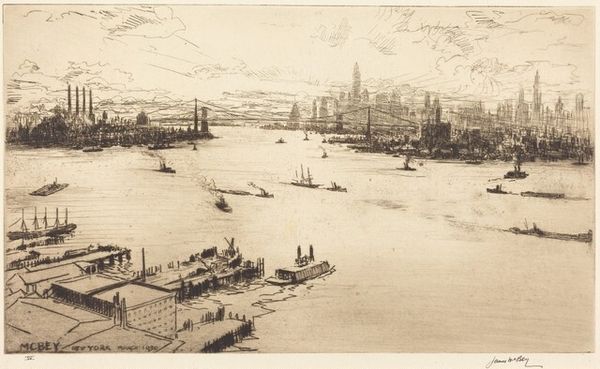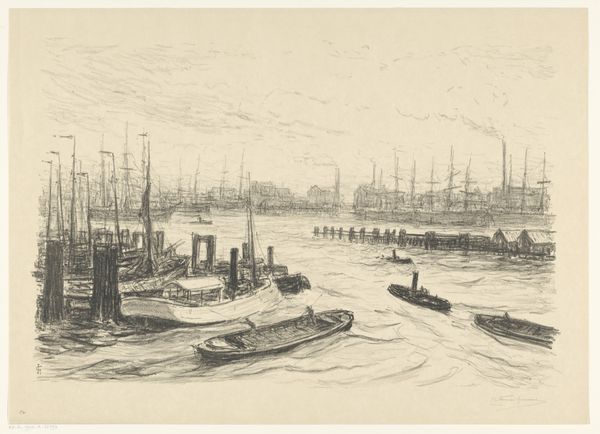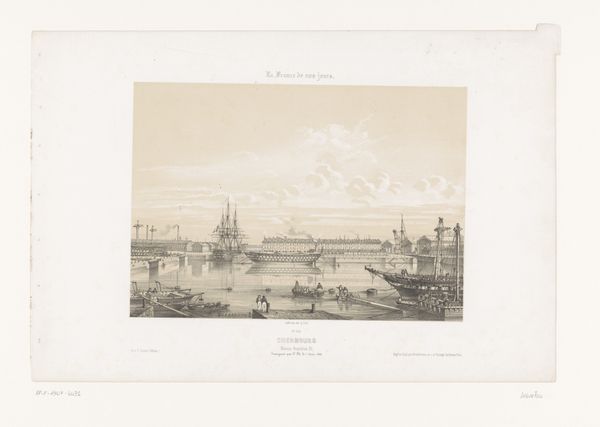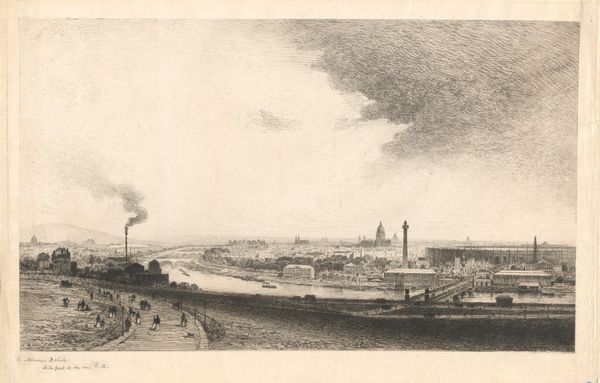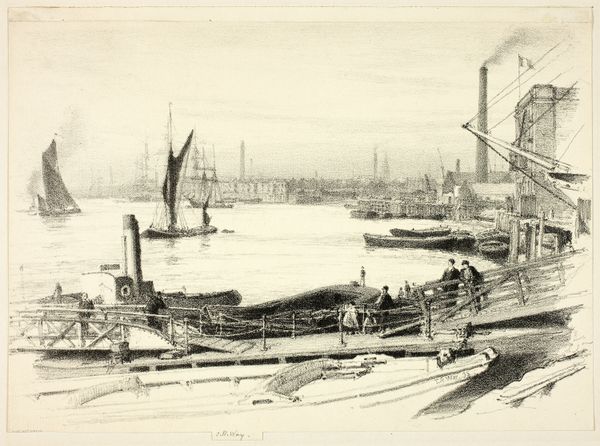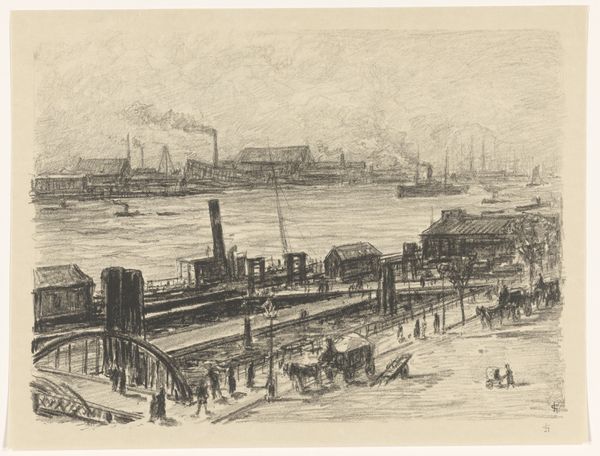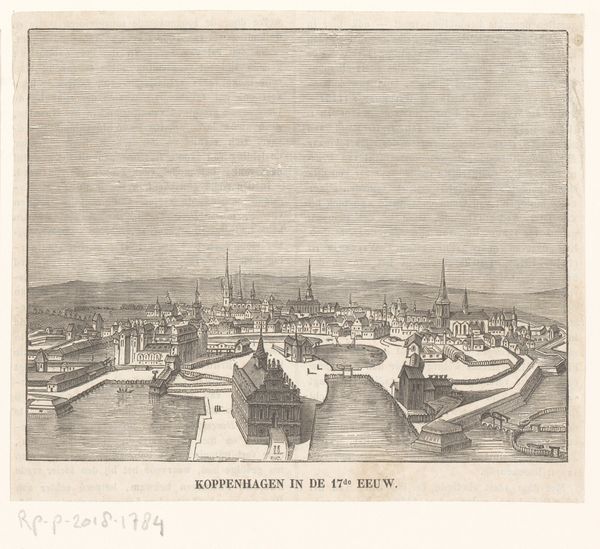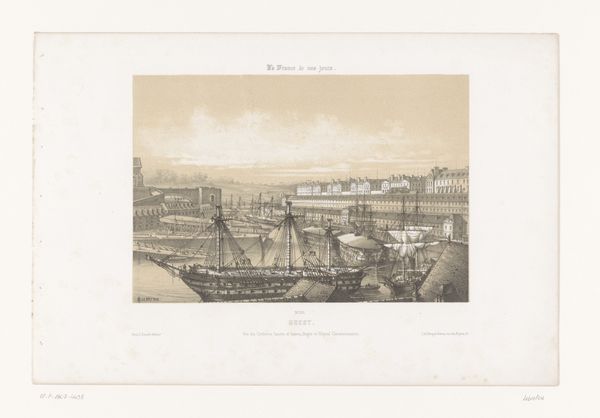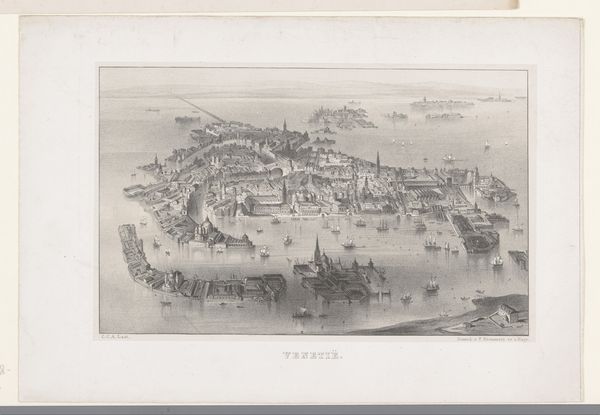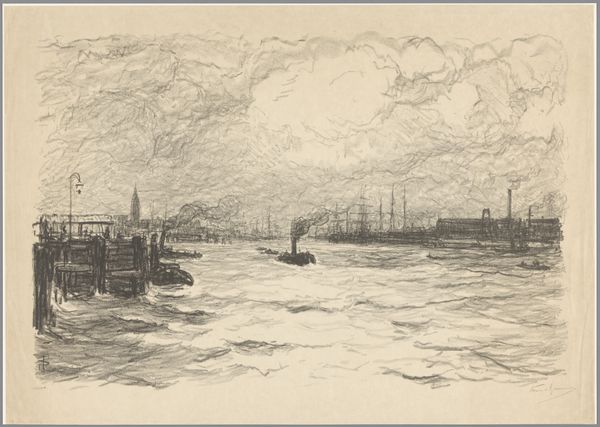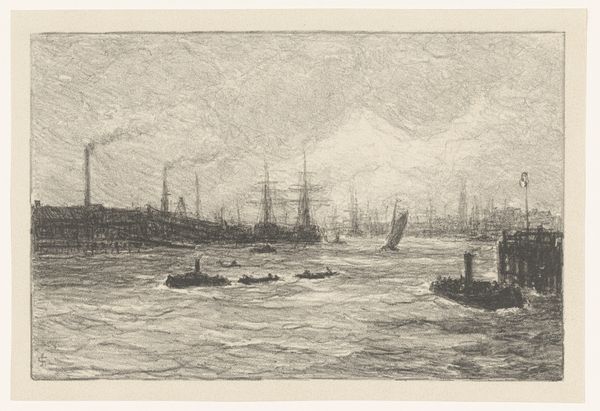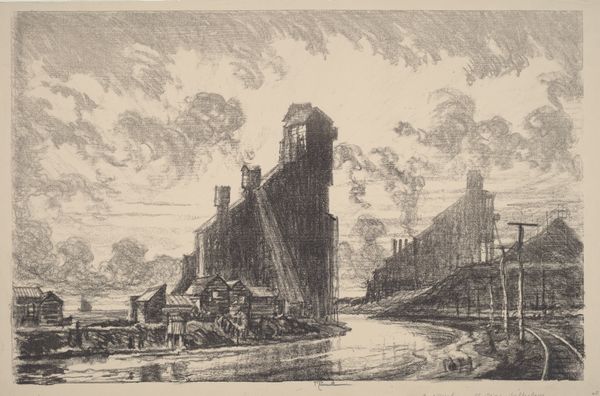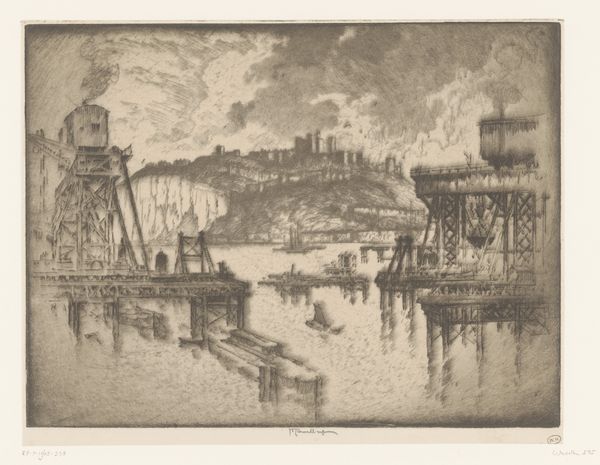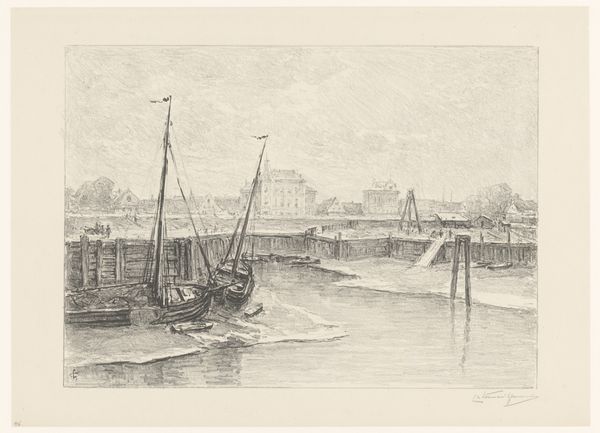
drawing, pencil
#
drawing
#
landscape
#
german-expressionism
#
pencil
#
cityscape
Copyright: National Gallery of Art: CC0 1.0
Editor: Here we have Fritz Stoltenberg's "Freihafen mit den Elbbrücken," a pencil drawing from 1893 depicting a cityscape. There's a somber industrial mood hanging over the entire scene. What can you tell me about it? Curator: Stoltenberg’s choice of subject is very telling. He's documenting Hamburg's free port and the Elbe bridges during a period of rapid industrial expansion, a period that was, for many, also marked by alienation and social stratification. Notice how the massive bridges dominate the landscape, dwarfing the human presence. How might this reflect the changing relationship between humans and industry in the late 19th century? Editor: I guess it could show how industry was starting to overshadow everything else, becoming this powerful, almost oppressive force. Curator: Precisely. And think about the artistic movements brewing at the time: German Expressionism was grappling with these feelings of anxiety and societal upheaval. The pencil medium itself lends a gritty texture, which further amplifies that somber mood you picked up on. Consider also, who is represented in this image, and who is left out? Whose voices are amplified, and whose are silenced? Editor: That's a really interesting point. You're right, there aren't many people visible; it's all about the structures and machines. It really makes you think about the human cost of industrial progress. Thanks for making me think of it in that context! Curator: My pleasure! Seeing art as a product of its time helps us understand not only the artwork but also the social and political landscape that shaped its creation, and, more importantly, how that era has an impact on us even today.
Comments
No comments
Be the first to comment and join the conversation on the ultimate creative platform.
